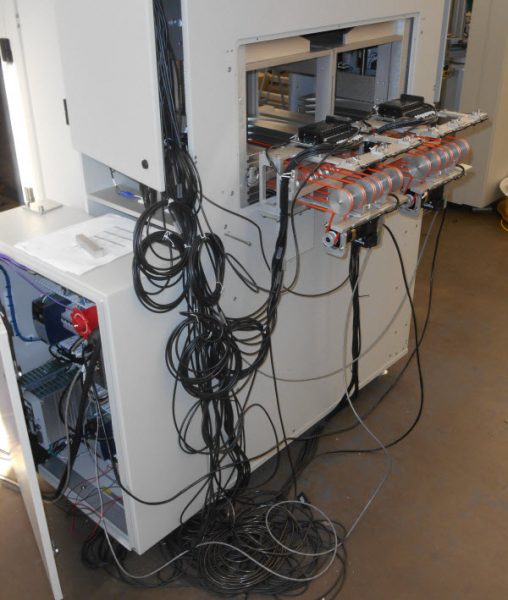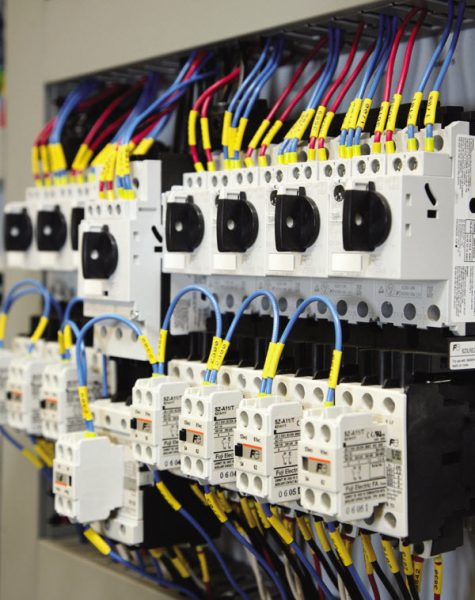It is often difficult to find internal resources to complete an industrial automation project. There are many reasons, such as time limitations and other constraints, so the solution often involves the use of external resources from a system integrator (SI). There are many decisions and requirements to consider when selecting a system integrator, and the integrator’s experience specific to the project at hand is perhaps most important.

The SI Direct Program was created to connect experienced system integrators to AutomationDirect customers. These integrators provide services with an emphasis on AutomationDirect programmable controllers, human machine interfaces and motion products. Related services include hardware design, software design, panel building and assembly, and a variety of field work. Member integrators of the SI Direct program have demonstrated specific product and application expertise. Members also receive ongoing training and equipment assistance from AutomationDirect.
Critical Decisions
The size of the automation project and the available internal resources typically drive a company’s need for an SI. If the company has engineering resources, they are often overworked and unavailable due to daily responsibilities. Complex and large projects exacerbate this problem, and often drive the decision to use an experienced SI.
When engaging an SI, it’s a good idea to create a scope of work to define the project. But don’t fret if you don’t know where to start, as a good SI can also perform this task.
The scope of work must detail project deliverables, schedule and performance. Deliverables can be services such as mechanical and electrical design, programming, panel building and operator manuals. Requirements such as performance, capacity, availability, quality and system architecture should also be defined; along with functional requirements such as control system sequences and other details.

An experienced person at both the SI and end user should be identified as the single point of contact for each firm. Each point of contact person should know the project details, and these two individuals should meet regularly to discuss project status and review designs.
Integrator Skill Requirements
Many system integrators have wide-ranging experience, but some are more specialized. Finding one that is a good match to your application or industry helps ensure the SI will follow standard industry practices. Once an SI is found, it often turns into a long-term relationship. Working with an AutomationDirect SI Direct system integrator, for example, is a first step to building this relationship.
The SI Direct program helps narrow your choices based on the integrators experience and other factors such as location. Not only will the SI be experienced with certain hardware, such as an AutomationDirect C-more touch panel or Productivity 2000 or 3000 series controller, they will also have specific knowledge of machine or process control. Machine and process control are two different worlds. The step sequence for machine control is much different than continuous or batch processes, and few integrators are comfortable in both areas.
While many SIs can learn on the fly, it is worth looking for one familiar with your industry as specifications and requirements will vary. Food processing and packaging are quite a bit different from automotive parts manufacturing. Learning, building and programming a system to meet food safety or washdown requirements can be a big step for some integrators. However, sometimes the integrator teaches the end user and sometimes the end user does the teaching. If the end user is willing to work closely with the integrator, and vice versa, the SI may become an excellent and dependable partner.
A Long-Term SI Partner
The SI Direct Program is a good place to find a long-term partner. It is common for integrators to be found by referral, and the program can provide these referrals. However, word-of-mouth may be an integrator’s only marketing effort, making them hard to find. Be sure to ask distributors, manufacturers and technical personnel—both inside and outside your organization—for SI referrals.
Spending the time to research and interview a potential integrator is worth the effort. The SI’s website can provide important background information. It will also help when creating a list of questions for interviews with SIs. Detailed discussions, whether over the phone and in person, are important when developing a long-term relationship. These discussions also help end users quickly collect information on an SI’s specific experience, professional certifications/licenses and customer references.

Careful Management
With the SI selected and under contract, it is important to start the project with a kickoff meeting to discuss specifications and requirements, and to have regularly scheduled status and design review meetings. One or people from the end user and the SI should attend these meetings. The schedule should document these planned meetings to ensure the SI remains on track
Spending the time to find and develop an experienced SI to design, program and commission startup a project is a key first step. These efforts, along with well-defined specifications and requirements, will help create a win-win partnership to ensure successful completion of the project.
If you need to engage an SI for PLC programming, engineering, electrical design or related activities, please call Tim Roberts at 678-455-1881, or email him at troberts@automationdirect.com.
For more information, please see the article A Detailed Approach to an SI Partnership in the April 2017 issue of Plant Engineering, authored by Tim Roberts, Program Manager, SI Direct Systems Integration Program at AutomationDirect.


